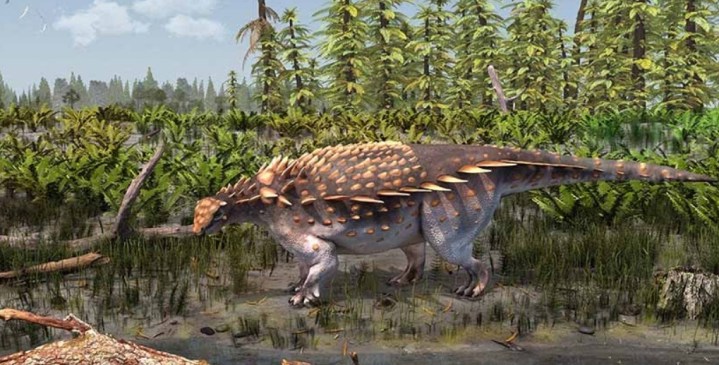Paleontological discoveries had their day of glory on June 16, as researchers from Chile, on the one hand, and from England, on the other, discovered the existence of two new species almost in parallel. dinosaurs.
These are the Chilean Gonkoken Nanoi and the English Vectipelta Barretti.
chilean dinosaur
the new kind discovered in Chile, baptized gonkoken nanoi, and corresponds a herbivore that lived 72 million years ago in the extreme south of this country, which is linked to the lineage of the hadrosaurs, a group also known as the “duck-billed” dinosaurs, of which there was no record in the entire Southern Hemisphere. According to estimates, its dimensions ranged from 3.5 to 4 meters in length, and the weight could reach a ton.
Specifically, it was found in the Valle del Río de Las Chinas sector, near Torres del Paine, in Chilean Patagonia.
“Interestingly, in South America other types of dinosaurs were already known “Duck beak”. For example, all those found in Argentinean Patagonia have been named, but they are all in a group or family called hadrosauridsor, if you like, true “platypus” dinosaurs or advanced “platypus” dinosaurs‘, says Jonathan Alarcón, a Paleontological Network researcher at the University of Chile and lead author of the study explaining his discovery.
Alarcon explains that the denomination “Gonkoken” It originates in the Aonikenk language (Southern Tehuelches), indigenous people who inhabited the area until the end of the 19th century.
“Like all known hadrosaurs, gonkoken nanoi it had a beak similar to that of a duck, so we wanted its name to hint at that characteristic,” says Alarcón. As for the term “nanoi”, was used to identify Mario “Nano” Ulloa, a former stall owner in Estancia Las Chinas, who provided great logistical support in the first discoveries of fossil animals and plants in this area.”
english dinosaur

Named after its discoverer, explorer Paul Barrett, a species of ankylosaurus was discovered on the Isle of Wight in England, which they named Vectipelta barretti.
The new species was published in the Journal of Systematic Paleontology.
“This is the first Ankylosaurus from the Isle of Wight in about 142 years since the last one was formally described,” he explains. pond, a museum researcher who led the study of the new dinosaur. “It was very interesting”.
“The specimen was excavated in the early 90s and ended up in the Dinosaur Island Museum, where we started working on it.”
Ankylosaurs were large herbivores with short legs and a broad, flat body. Applies to animals such as Stegosaurusthey were covered with large bony shells and spikes, which probably helped them defend themselves from hungry predators.
The new Ankylosaurus dates back to the Lower Cretaceous, about 125 million years ago.
At that time, Europe was not a single landmass, but a series of islands scattered in a subtopic sea. One of these islands would include the south of England and the Isle of Wight. The climate would be similar to today’s Mediterranean, with the island covered in moist coniferous and fern forests.
Source: Digital Trends
I am Garth Carter and I work at Gadget Onus. I have specialized in writing for the Hot News section, focusing on topics that are trending and highly relevant to readers. My passion is to present news stories accurately, in an engaging manner that captures the attention of my audience.











